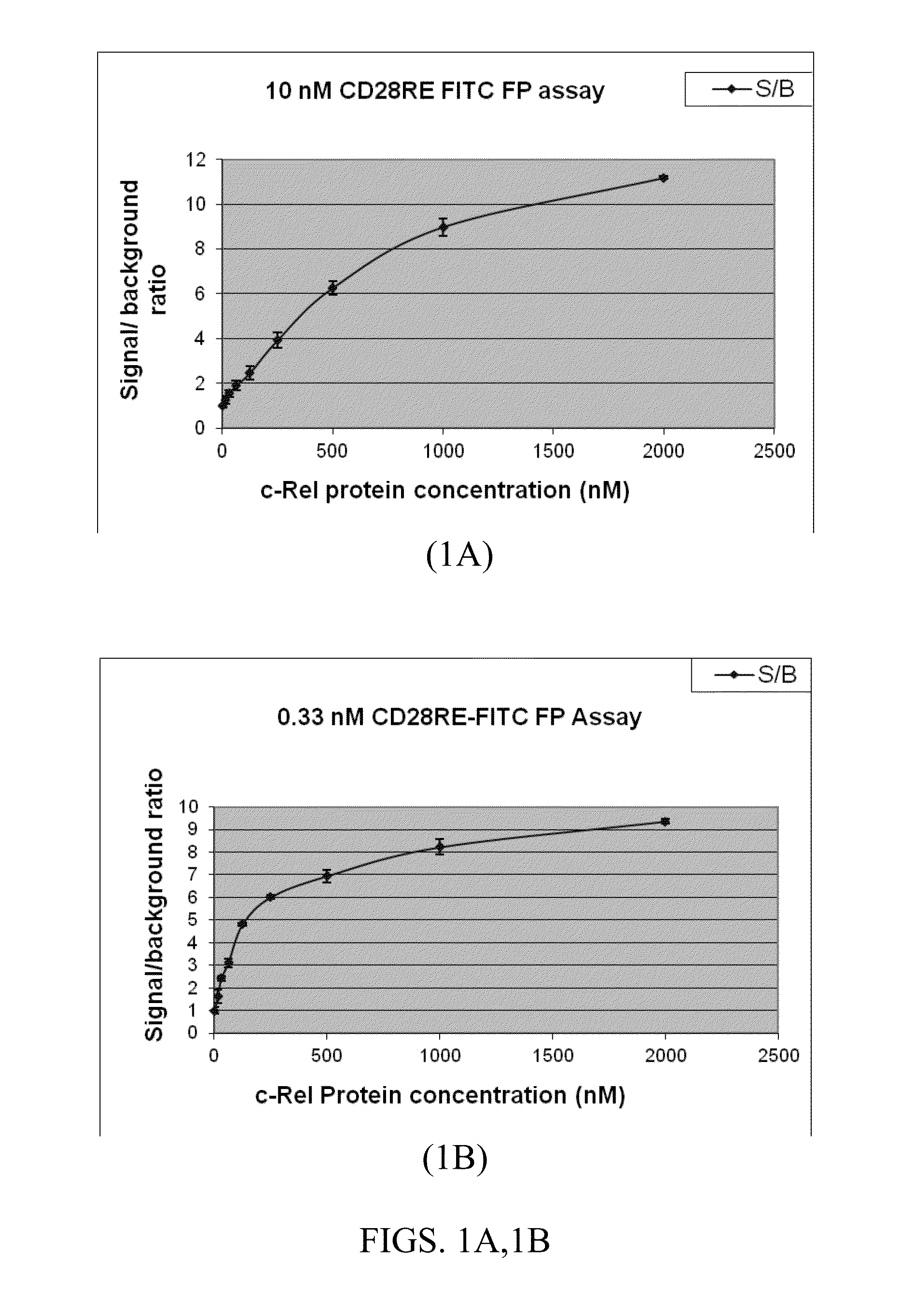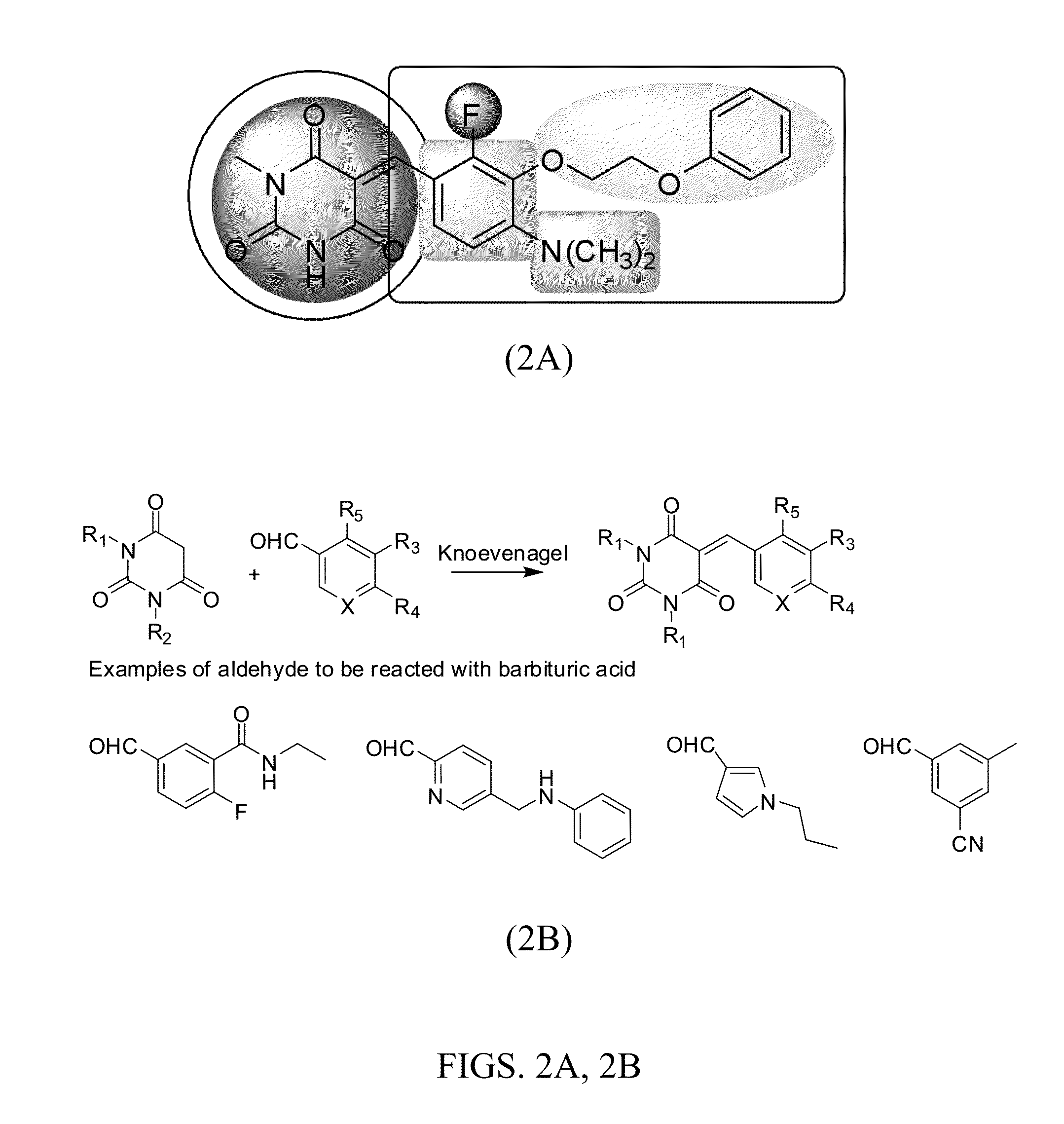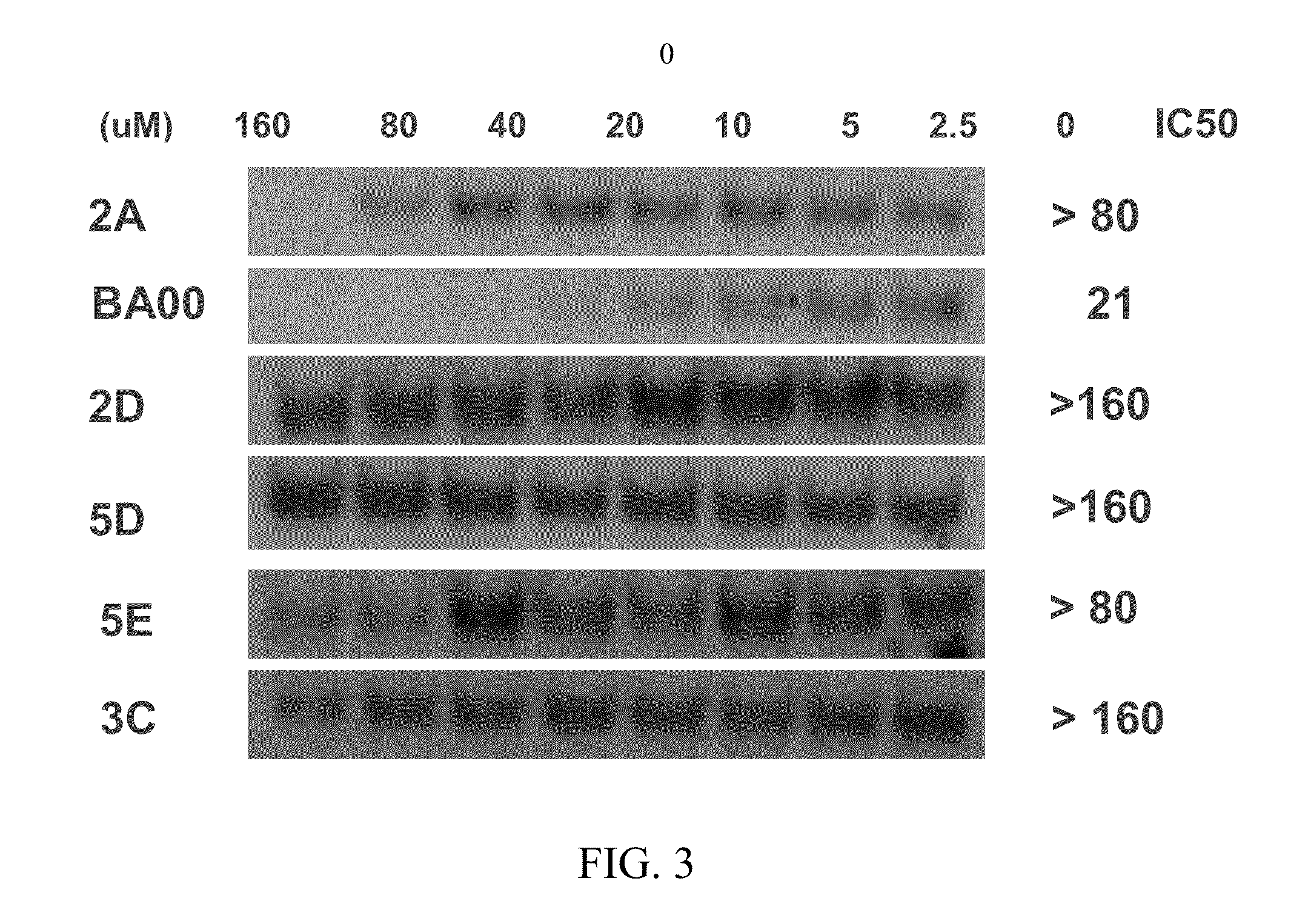C-rel inhibitors and uses thereof
- Summary
- Abstract
- Description
- Claims
- Application Information
AI Technical Summary
Benefits of technology
Problems solved by technology
Method used
Image
Examples
example 1
Biochemical Assays (Fluorescence Polarization) for Screening of Rel Inhibitors
[0140]This Example describes the identification of small molecule inhibitors of c-Rel. Rel protein functions primarily by forming a homo- or hetero-dimer and binding its cognate DNA site in the promoter region of targeted genes. Thus, small molecules that are able to efficiently disrupt the formation of the c-Rel dimer-targeted kB site complex are desirable inhibitors. These compounds may act either directly via inhibition at the protein-DNA interface or dimerizational interface, or indirectly by binding to an allosteric site and induction of a conformational change of c-Rel protein.
[0141]Historically, transcription factors have been considered difficult to access by small molecule inhibitors due to the large interaction surface mediating the binding of transcription factors to DNA. However, there is growing evidence to suggest that small molecules can modulate the interactions responsible for DNA-protein ...
example 2
Synthesis of Rel Inhibitors
Example 2-1
Synthesis of 5-(4-methoxybenzylidene)-2-thioxodihydropyrimidine-4,6(1H,5H)-dione, 1b
[0144]1.a) Synthesis of 2-thioxodihydropyrimidine-4,6(1H,5H)-dione, 1a
[0145]Diethyl malonate (6.40 g, 40 mmol) was added into a solution of sodium ethoxide in ethanol (21% wt, 22.4 ml, 80 mmol). Precipitation occurred progressively. The reaction mixture was stirred for 1 hour. To the mixture was added thiourea (3.04 g, 40 mmol). The reaction mixture was heated to 80° C. for 20 hours. LCMS indicated that the reaction was completed. The reaction mixture was concentrated to obtain an off-white powder residue. 15 ml of water was added to dissolve the residue. 25 ml of acetic acid was added progressively to the mixture to cause precipitation. After the addition of acetic acid, the mixture was gently stirred for an additional 2 hours at 10° C. The solid was filtered, washed with water and dried at 40° C. in a vacuum oven to yield compound 1a, (74%, 4.26 g, 29.6 mmol).
[...
example 2-2
Synthesis of 5-(naphthalen-1-ylmethylene)-2-thioxodihydropyrimidine-4,6(1H,5H)-dione, 2b
[0148]A mixture of 1a (0.072 g, 0.5 mmol) and 1-napthaldehyde (0.078 g, 0.5 mmol) in ethanol (2 ml) was heated to 80° C. and stirred for 18 hours. Ethanol was partially removed from reaction mixture by evaporation. To the residue was added water (5 ml) and ethyl acetate (3 ml). The suspension was stirred at 0° C. for 1 hour and then filtered. The solid was filtered, washed with water, washed with a mixture of hexanes:ethyl acetate, 8:2, and dried under vacuum to yield 2b, (72%, 0.102 g, 0.36 mmol).
PUM
 Login to View More
Login to View More Abstract
Description
Claims
Application Information
 Login to View More
Login to View More - R&D
- Intellectual Property
- Life Sciences
- Materials
- Tech Scout
- Unparalleled Data Quality
- Higher Quality Content
- 60% Fewer Hallucinations
Browse by: Latest US Patents, China's latest patents, Technical Efficacy Thesaurus, Application Domain, Technology Topic, Popular Technical Reports.
© 2025 PatSnap. All rights reserved.Legal|Privacy policy|Modern Slavery Act Transparency Statement|Sitemap|About US| Contact US: help@patsnap.com



